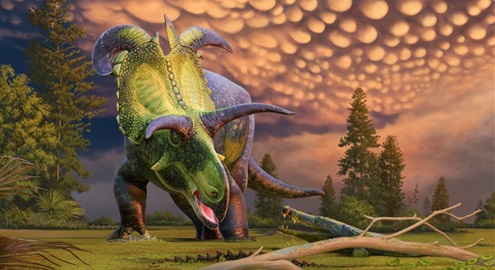According to a study published in the journal Nature, researchers have discovered a new species of dinosaur 'Khankhuuluu mongoliensis' in Mongolia.

About the new species
- Name: Khankhuuluu mongoliensis
- Discovery of remains: The skeletons of this species were discovered in the Gobi Desert of Mongolia in the year 1972-73.
- However, these remains were misidentified as 'Alectrosaurus olsoni', another obscure species of dinosaur.
- After this misidentification, the bones were placed in a museum and remained relatively untouched for about 50 years.
- This new species has been discovered when the researchers re-examined the research started in the year 2023.
Findings of a recent research study
- The 86 million-year-old skeletons belong to a species that is the closest known ancestor of the Tyrannosaurus family.
- The Tyrannosaurus family is a group of dinosaur predators that includes the famous T.rex.
- The new species was smaller than normal in size and ran on two legs.
- They were fast-moving predators that lived in the shadow of other top predatory dinosaurs.
- It weighed about 750 kg, while an adult T.rex could weigh eight times more.
- This group of dinosaurs was able to travel between North America and Asia, connected at that time through land bridges connecting Siberia and Alaska, which also helped them find and occupy different places.
- This movement between continents drove the evolution of originally different tyrannosaur groups over millions of years.
Significance of the discovery
- The researchers named the species ‘Khankhuulu mongoliensis’, which means ‘dragon prince of Mongolia’ (because of its small size).
- The species represents an evolutionary transition from small predators that roamed during the Jurassic period to the formidable giant dinosaurs, including T. rex.
- It may help researchers revise the lineage of the tyrannosaur family and rewrite what we know about evolution.



